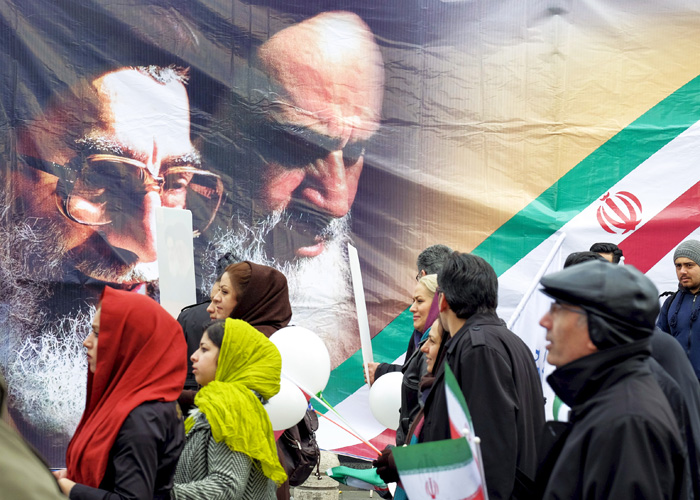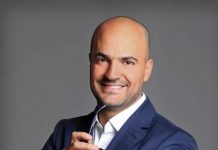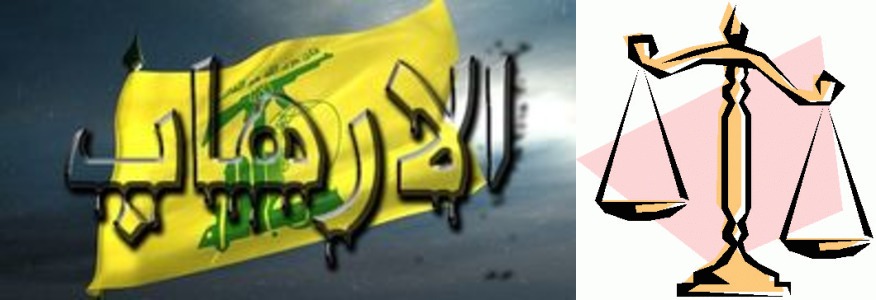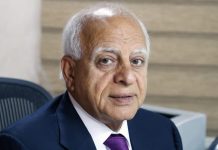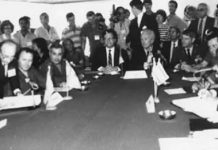القلنسوة أم العمامة أم القبعة العسكرية… أيها ستنقذ الملالي؟
أمير طاهري/الشرق الأوسط/04 تشرين الأول/2019
The Hat, the Turban And the Cap: Which Can Save the Mullahs?
October 04/ 2019
Amir Taheri/Asharq Al Awsat/October 04/2019
As Hassan Rouhani’s presidency drifts towards what promises to be less than a brilliant end, speculation is starting about the next phase in the power struggle that has been a permanent feature of the Khomeinist regime from the start.
Some Iran-watchers argue that the regime’s true backbone consists of the military-security establishment using the “Supreme Guide” Ali Khamenei as a frontman. While that view reflects an aspect of the Iranian reality, it would be wrong to conclude that the military chiefs would remain content with the present arrangement. The nature of political power, in any system, is that those who secure a share of it always want more.
Iran’s military chiefs are no exception. Casting themselves as the regime’s true protectors and claiming a purity associated with untrodden snow, they have always whined about the alleged corruption and incompetence of the mullahs and bureaucrats who have run the show since 1979. What is new is that today they are whining louder and louder while advancing their claim as the fittest candidates for ruling the nation.
The military chiefs, more specifically the top brass of the Islamic Revolutionary Guard Corps (IRGC), have always promoted their ambitions through the vast media empire they control inside and outside Iran. What is new is that today they are advancing their bid for power directly and more openly. The latest occasion for that came last Monday during the General Congress of the IRGC’s commanders and political and religious commissars. While the last congress, held in 2016, was a low-profile event, the gathering last Monday received top billion from the state-controlled media, at times assuming the character of a political party’s convention.
The congress put the limelight on two generals with thinly disguised political ambitions. The keynote speech was reserved for Chief of Staff Major-General Muhammad Baqeri who is regarded as the intellectual of the bunch while Major-General Qassem Soleimani, Commander of the Quds (Jerusalem) Corps, was cast as second fiddle.
Baqeri’s speech, lasting more than 50 minutes, seemed to pursue three key objectives.
The first was to persuade the people that Iran was not heading for a war and that the military-led by him was strong enough to cope with any eventuality. Remarkably, his analysis seemed to exclude any role for the Islamic Republic’s political authorities. All that Iran needed to be safe from foreign invasion was the “Supreme Guide” and his military machine.
Baqeri’s second objective was to send a conciliatory signal to Iran’s real or imagined enemies, more particularly the United States. He did this in two ways: by claiming that as far as establishing Iran’s influence in Lebanon, Syria, Iraq, and Yemen was concerned it was mission accomplished and that Tehran had no intention of opening new fronts or intensifying its presence in the region. He said Iran “recognizes its responsibility towards regional security and stability, playing a key role in that domain, having no intention to {practice} enmity or harbor any thought of aggression, fomenting insecurity and war.”
In a hardly coded message, Gen. Baqeri added that Tehran was “trying to foster calm through regional cooperation.”
To hammer in his conciliatory theme further, the general called for coping with the US-imposed sanctions “with patience and magnanimity.”
Baqeri’s third objective was to present the IRGC as a major player in Iran’s economic life, claiming that its controversial presence in thousands of businesses was in public interest. He implied that while the IRGC as an economic actor was snow-white, the public sector controlled by the government was ridden with corruption, nepotism, and inefficiency. The implication was that if the IRGC were in charge of everything, most of Iran’s current economic and social problems would disappear.
As for Gen. Soleimani, a master of public relations, he spoke in his signature hyperbolic style, claiming to have defeated the American army and revealed that the US was nothing but a scarecrow. He shared one key theme with Gen. Baqeri: the claim that the political leadership, that is to say, Rouhani and his team, had failed in almost everything and that their sell-by-date had long passed.
Does this mean that we now have two generals testing the waters for a direct bid for power?
Unlike many so-called “developing nations”, Iran does not have a tradition of the military intervening in politics let alone running the government.
The Khomeinist regime has seen presidents. Of those, three were “hat-wearing” ones (Mukalla in Persian). However, only one, Mahmoud Ahmadinejad, managed to survive for two full terms. The first one Abol-Hassan Banisadr had to flee to exile after a year to save his skin. The second, Muhammad-Ali Raja’i, was blown into pieces in a terrorist operation just weeks after being sworn in. The remaining four presidents have all been turbaned (muam’mam). Two had black turbans, signifying descent from Fatimah, the daughter of Prophet Muhammad. The other two had white turbans, indicating their pure Iranian origin.
Some observers, including a few among the regime’s loyal opposition, believe that it is time to set aside both the “hat” (kolah) and the “turban” and give the military “cap” a chance to save the beleaguered regime.
Over the past 40 years, several generals, active or retired, have thrown their military cap into the ring in the hope of winning the presidency. However, none managed to make much of an impression, let alone reaching the run-off stage.
With the mullahs and their bureaucratic associates largely discredited, the military may have a better chance this time, at least within the Khomeinist movement.
In fact, informal groups promoting the idea of a military president for the Khomeinist regime are already taking shape. An exile group in Florida, led by a former senior diplomat, is campaigning for Gen. Soleimani who has also even celebrated by a BBC Persian commentator as “a Sufi commander”. Another group led by an Ira-American University professor in New Jersey is campaigning to draft Gen. Baqeri with the help of several retired IRGC officers.
The rationale behind these nascent campaigns is that it would be better to let those who hold real power in Iran also exercise it within a transparent and legal context.
This may or may not be a sound argument. However, I think the Khomeinist regime is fast entering a phase in its historic development in which no one would be able to save it from these inner contradictions. The hat, the turban, and the cap are of little use when the head is rotten.
القلنسوة أم العمامة أم القبعة العسكرية… أيها ستنقذ الملالي؟
أمير طاهري/الشرق الأوسط/04 تشرين الأول/2019
في الوقت الذي تتجه فيه رئاسة حسن روحاني تجاه ما بدا نهاية أقل من أن توصف بالرائعة، بدأت التكهنات بشأن المرحلة التالية من الصراع على السلطة التي طالما شكلت سمة دائمة للنظام الخميني منذ بداياته. يجادل بعض مراقبي إيران بأن العمود الفقري الحقيقي للنظام يعتمد على المؤسسة الأمنية العسكرية باستخدام «المرشد الأعلى» علي خامنئي كرجل الواجهة. وفي حين أن هذا الرأي يعكس جانباً من الواقع الإيراني، فمن الخطأ أن نستنتج أن القادة العسكريين سيظلون راضين عن الترتيبات الحالية. فطبيعة السلطة السياسية في أي نظام كان هي أن أولئك الذين ضمنوا نصيباً في السلطة دائماً ما يتطلعون إلى المزيد.
القادة العسكريون الإيرانيون ليسوا استثناء. فلأنهم حماة النظام الحقيقيون الذين يزعمون أنهم أكثر نقاءً من الثلج الناصع البياض، فقد ظلوا دائماً يتذمرون من الفساد وعدم كفاءة الملالي ومن البيروقراطيين الذين أداروا الحياة العامة منذ عام 1979. والجديد هو أنهم اليوم يصرخون بصوت عالٍ، ويقدمون أنفسهم على أنهم المرشح الأصلح لحكم البلاد.
لطالما روّج القادة العسكريون، وعلى الخصوص كبار قادة «الحرس الثوري» الإسلامي، لطموحاتهم من خلال الإمبراطورية الإعلامية الواسعة التي يسيطرون عليها داخل إيران وخارجها. الجديد في الأمر هو أنهم اليوم يدفعون في ذلك الاتجاه بشكل مباشر وأكثر صراحة. كانت آخر مناسبة لذلك الاثنين الماضي خلال المؤتمر العام لقادة «الحرس الثوري» والمفوضين السياسيين والدينيين. وعلى الرغم من أن المؤتمر الأخير الذي انعقد عام 2016 لم يكن بالحدث البارز، فقد تلقى التجمع الاثنين الماضي مليار دولار من وسائل الإعلام التي تسيطر عليها الدولة، وهو التجمع الذي أحياناً يحمل طابع مؤتمر الحزب السياسي.
سلط المؤتمر العام الأضواء على جنرالين لهما طموحات سياسية خفية. فقد جرى تخصيص الخطاب الرئيسي لرئيس الأركان اللواء محمد باقري الذي يُنظر إليه باعتباره المثقف الأكبر في المجموعة، بينما جرى منح اللواء قاسم سليماني، قائد «فيلق القدس»، دوراً ثانوياً. وقد بدا أن خطاب باقري الذي استمر أكثر من 50 دقيقة، يسعى لتحقيق ثلاثة أهداف رئيسية.
الهدف الأول كان إقناع الناس بأن إيران لا تتجه إلى الحرب، وأن الجيش الذي يقوده قوي بما يكفي لمواجهة أي احتمال. ومن اللافت للنظر أنه يبدو أن تحليله يستبعد أي دور للسلطات السياسية للجمهورية الإسلامية، وأن كل ما تحتاج إليه إيران لتكون في مأمن من الغزو الأجنبي هو المرشد الأعلى وآلته العسكرية.
كان الهدف الثاني لباقري هو إرسال إشارة تصالحية إلى أعداء إيران الحقيقيين أو التخيليين، وبخاصة الولايات المتحدة. وفعل ذلك بادعائه بأنه فيما يتعلق بتأسيس نفوذ إيران في لبنان وسوريا والعراق واليمن، أنها قد أنجزت مهامها، وأن طهران ليس لديها نية لفتح جبهات جديدة أو تكثيف وجودها في المنطقة. وقال إن إيران «تعترف بمسؤوليتها تجاه الأمن والاستقرار الإقليميين، وتلعب دوراً رئيسياً في هذا المجال، وليس لديها أي نية لممارسة العداء أو حتى التفكير في العدوان «والتسبب في انعدام الأمن وقيام حرب».
في رسالة مشفرة، أضاف الجنرال باقري أن طهران «تحاول تعزيز الهدوء من خلال تعزيز التعاون الإقليمي». وللتطرق إلى موضوعه التوفيقي، دعا الجنرال إلى التغلب على العقوبات التي تفرضها الولايات المتحدة «بالصبر والشهامة».
كان الهدف الثالث لباقري هو تقديم «الحرس الثوري» الإيراني بصفته لاعباً رئيسياً في الحياة الاقتصادية لإيران، مدعياً أن وجوده المثير للجدل في الآلاف من الشركات كان في الصالح العام. لقد أشار ضمنياً إلى أنه بينما كان «الحرس الثوري» الإيراني فاعلاً اقتصادياً، كان القطاع العام الخاضع لسيطرة الحكومة يعج بالفساد والمحسوبية وانعدام الكفاءة. كان التفسير الأول هو أنه حال أصبح «الحرس الثوري» مسؤولاً عن كل شيء، فإن معظم المشكلات الاقتصادية والاجتماعية الحالية في إيران ستختفي.
أما بالنسبة للجنرال سليماني، أستاذ العلاقات العامة، فقد تحدث بأسلوبه المبالغ، مدعياً أنه هزم الجيش الأميركي، وكشف عن أن الولايات المتحدة ليست سوى فزاعة. وأثار الجنرال باقري موضوعاً واحداً، هو الادعاء بأن القيادة السياسية، أي روحاني وفريقه، قد فشلت في كل شيء تقريباً، وأوانها قد مر منذ زمن طويل.
هل هذا يعني أنه بات لدينا الآن جنرالات تجس النبض للتقدم في مزاد الحصول على السلطة؟
على عكس ما يسمى بـ«الدول النامية»، فإن إيران ليس لديها تاريخ في التدخل العسكري في السياسة ناهيك عن إدارة الحكومة. لقد شهد النظام الخميني الكثير من الرؤساء، من بينهم ثلاثة «يرتدون القلنسوات». وتمكن واحد فقط، محمود أحمدي نجاد، من البقاء لفترتين كاملتين. اضطر أول هؤلاء الرؤساء، أبو الحسن بني صدر، إلى الفرار إلى المنفى بعد عام للنفاذ بجلده. والثاني، محمد علي رجائي، تعرض للتفجير وتقطع إلى أشلاء في عملية إرهابية بعد أسابيع فقط من أدائه اليمين. وقد وضع الرؤساء الأربعة الباقون العمائم على رؤوسهم. وكان لاثنين منهم عمامتان سوداوان، للدلالة على الانتساب إلى السيدة فاطمة، ابنة سيدنا محمد (صلى الله عليه وسلم)، في حين وضع الاثنان الآخران عمامتين بيضاوين، للدلالة على أصلهما الإيراني الخالص.
يعتقد بعض المراقبين، بما في ذلك قلة من معارضي النظام المخلصين، أن الوقت قد حان لترك القلنسوات والعمائم، وإعطاء «القبعة العسكرية» الفرصة لإنقاذ النظام المحاصر.
خلال الأربعين سنة الماضية، ألقى الكثير من الجنرالات، الناشطين أو المتقاعدين، القبعة العسكرية في الحلبة أملاً في الفوز بالرئاسة. ومع ذلك، لم ينجح أي منهم في التأثير في جمهور الناخبين، ناهيك عن الوصول إلى مرحلة الإعادة.
ومع تشويه سمعة الملالي وشركائهم البيروقراطيين، قد يكون لدى الجيش فرصة أفضل هذه المرة، على الأقل داخل الحركة الخمينية. في الواقع، بدأت مجموعات غير رسمية تروّج لفكرة رئيس عسكري للنظام الخميني في التبلور، حيث يقوم مجموعة للمنفيين في فلوريدا، بقيادة دبلوماسي كبير سابق، بحملة لصالح الجنرال سليماني الذي احتفل به المعلق الفارسي لهيئة الإذاعة البريطانية «كقائد صوفي». هناك مجموعة أخرى يقودها أستاذ بالجامعة الإيرانية الأميركية في نيو جيرسي تقوم بحملة لتلميع الجنرال باقري بمساعدة الكثير من ضباط «الحرس الثوري» المتقاعدين.
الأساس المنطقي وراء هذه الحملات الجديدة هو أنه سيكون من الأفضل السماح لأولئك الذين يمتلكون سلطة حقيقية في إيران بممارستها أيضاً في سياق قانوني شفاف. قد يكون لذلك حجة سليمة، ومع ذلك، أعتقد أن النظام الخميني يدخل مرحلة من التطور التاريخي بسرعة بحيث لا يستطيع أحد أن ينقذه من تناقضاته الداخلية. فالقلنسوة والعمامة والقبعة العسكرية كلها قليلة الفائدة عندما يكون الرأس فاسداً.















